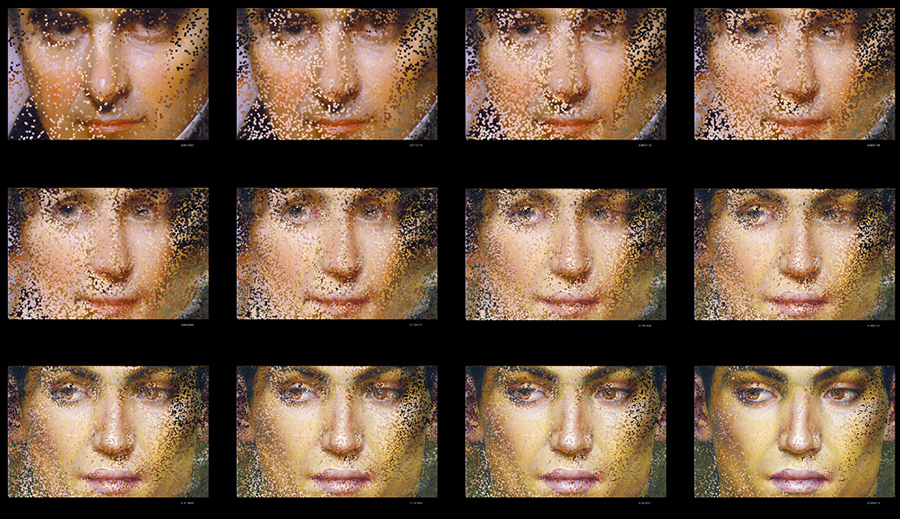Archive Fever

Commissioned by the Hood Museum of Art, Hanover, NH, on the occasion of its twentieth anniversary in 2005, Archive Fever undertakes the nearly impossible task of animating more than 600 drawings, paintings, prints, sculptures and cultural objects in the Museum’s diverse collection of more than 65,000 works of art.
Archive Fever’s explicit subject is the Hood Museum of Art’s extensive and varied collection, itself a marvelous archive of differences and similarities in cultures and imaginations. The diverse strategies and techniques we’ve used to animate the program are intended to be a direct reflection of the Hood’s own diversity. In fact, we found it impossible and even antithetical to homogenize our selection of over six hundred individual objects from the Hood’s sixty-five thousand into some form of comforting unity. We also hope viewers will discover an implicit correspondence between Archive Fever’s polyphony of images and their own rich memories of the Hood’s collection. As is the case with memories, we anticipate that each time viewers return to Archive Fever they will find their experiences to be somewhat different.
Archive Fever is a protean, nonlinear computer program composed of 113 animated sequences created to run in real time. Since the program is in a constant state of unpredictable flux there is no beginning or ending per se. As the program plays itself out, the result is a kind of performance by the computer, to which we have assigned a range of choices and options regarding the order, duration, and, at times, appearance of the sequences.
When Archive Fever is playing, the numbers shown at the beginning of each sequence refer to the Hood’s object numbers identifying the specific works used in that sequence. At the bottom of the screen the small numbers refer to several different pieces of information: on the left, to frame numbers or the number of “ticks” the sequence has been running (used in the programming instructions as a “timer”); and, on the right, to the number of milliseconds since the computer itself was turned on. The speed at which these numbers refresh also indicates the speed at which any particular sequence is programmed to run — from a few frames per second, to as fast as the computer is capable of performing.
MANUAL composed the playful audio clips for Archive Fever in response to the Hood’s collection of more than 400 musical instruments. Many are percussion and stringed instruments, but the collection includes everything from bagpipes to a Moog III synthesizer to various oboes and many others between. For the most part, audio clips have been placed at the beginning of each sequence while the screen is black, before the visuals of the sequence actually begin. In this sense the clips are separate and independent, but still associated with the sequence and intended to either contrast or blend with the visuals that follow. In several cases, however, the clips are actual sound tracks embedded as loops within the visual section of the sequence.
If all 113 sequences of Archive Fever were shown in a linear manner, the program would run over 15 hours. However to enhance the likelihood of a viewer’s seeing a different sequence at each encounter, and to keep things lively and give the computer the ‘job’ of determining choices, the behavior of the sequences is squirrel-like, as though it was taking different routes or paths around a large live oak tree with numerous sculptural limbs and branches. At various junctures, the squirrel makes a choice of which branch to follow and then how to get back to the main trunk.
Click here for information about three of the 113 sequences in the program.